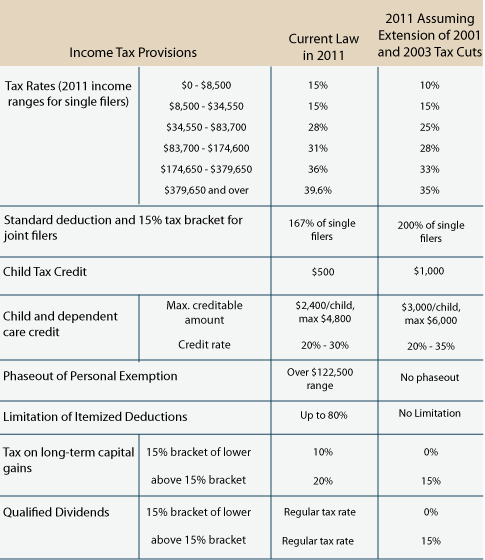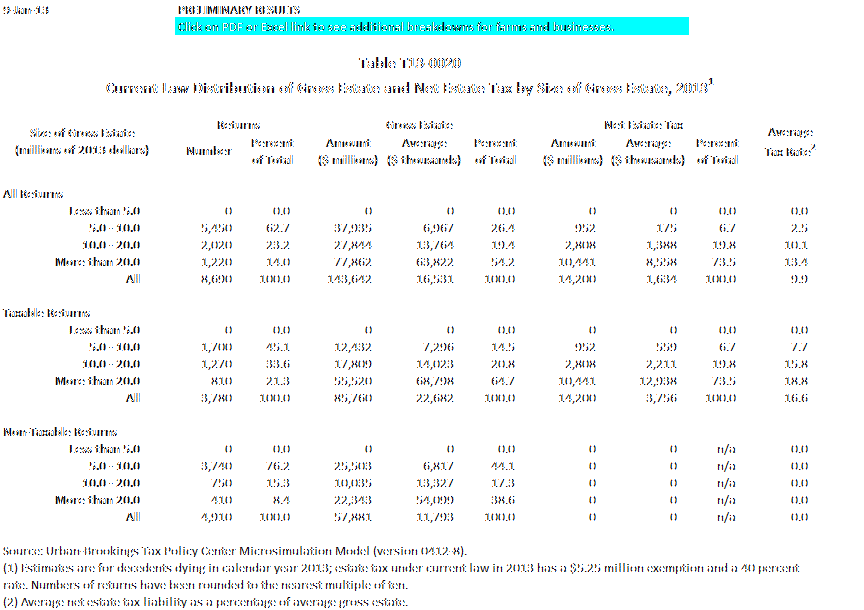TPC Tax Topics
Post on: 16 Март, 2015 No Comment

The Romney Plan (Updated)
In his campaign for the Republican presidential nomination, Mitt Romney has proposed permanently extending the 2001-03 tax cuts, further cutting individual income tax rates, broadening the tax base by reducing tax preferences, eliminating taxation of investment income of most individual taxpayers, reducing the corporate income tax, eliminating the estate tax, and repealing the alternative minimum tax (AMT) and the taxes enacted in 2010’s health reform legislation. The Tax Policy Center (TPC) has completed a preliminary analysis of the Romney plan, based on information posted on the campaign website and email exchanges with campaign policy advisors. Because we have received no details on proposals to reduce tax preferences, the TPC analysis does not include those proposals. 1
Description of Plan
Governor Romney would permanently extend all the 2001 and 2003 tax cuts now scheduled to expire in 2013, repeal the AMT and certain tax provisions in the 2010 health reform legislation, and cut individual income tax rates by an additional 20 percent. He would also expand the tax base by cutting back tax preferences, but has supplied no information on which preferences would be reduced. Tax provisions in the 2009 stimulus act and subsequently extended through 2012 would expire. These include the American Opportunity tax credit for higher education, the expanded refundability of the child credit, and the expansion of the earned income tax credit (EITC). The plan would also eliminate tax on long-term capital gains, dividends, and interest income for married couples filing jointly with income under $200,000 ($100,000 for single filers and $150,000 for heads of household) and repeal the federal estate tax, while continuing the gift tax with a maximum tax rate of 35 percent. 2
The plan would reduce the six current income tax rates by one-fifth, bringing the top rate down from 35 percent to 28 percent and the bottom rate from 10 percent to 8 percent. The accompanying repeal of the AMT would increase the tax savings from the rate cuts—without that repeal, the AMT would reclaim much of the tax savings.
The plan would recoup the revenue loss caused by those changes by reducing or eliminating unspecified tax breaks, thereby making more income subject to tax. Gov. Romney says that the reductions in tax breaks, in combination with moderately faster economic growth brought about by lower tax rates, will make the individual income tax changes revenue neutral compared with simply extending the 2001 and 2003 tax cuts. He also promises that low- and middle-income households will pay no larger shares of federal taxes than they do now.
At the corporate level, the Romney plan would make two major changes: 1) reduce the corporate income tax rate from 35 to 25 percent and 2) make the research and experimentation credit permanent, It would also extend for one year the full expensing of capital expenditures and allow a “tax holiday” for the repatriation of corporate profits held overseas. The plan does not specify, however, whether repatriated earnings would face any tax and, if so, at what rate. In the longer run, Gov. Romney would reduce the corporate rate further in conjunction with base broadening and simplification and would move the corporate tax to a territorial system.
Gov. Romney would also permanently repeal the 0.9 percent tax on wages and the 3.8 percent tax on investment income of high-income individual taxpayers that were imposed by the 2010 health reform legislation and are scheduled to take effect in 2013.
Because Gov. Romney has not specified how he would increase the tax base, it is impossible to determine how the plan would affect federal tax revenues or the distribution of the tax burden. TPC has analyzed instead the effects of the specified proposals in the Romney plan. These estimates provide a guide as to how much the base broadening would need to raise taxes in different income groups to achieve the plan’s targets.

TPC’s analysis measures the change in tax liabilities against two alternative baselines: current law, which assumes that the 2001-10 tax cuts all expire in 2013 as scheduled, and current policy, which assumes that the 2011 law is permanent (except for the one-year payroll tax cut and temporary investment incentives). 3 Compared with the current law baseline, the Romney plan (absent base broadening) would cut taxes for about three-fourths of taxpayers by an average of more than $7,000. In contrast, compared with current policy, about 11 percent of tax units would see their 2015 taxes go up an average of nearly $900 while 70 percent would get tax cuts averaging almost $4,300. The tax increases reflect the expiration of three provisions enacted in 2009: the American Opportunity Tax Credit and the expansion of the earned income credit and the child credit.
Also in the absence of such base broadening, TPC estimates that on a static basis, the Romney plan would lower federal tax liability by about $900 billion in calendar year 2015 compared with current law, roughly a 24 percent cut in total projected revenue. Relative to a current policy baseline, the reduction in liability would be about $480 billion in calendar year 2015.
Appendix: Detailed List of Assumptions Underlying Analysis
Based on the campaign’s summary and Gov. Romney’s statements, TPC assumes that the 2001-03 tax cuts become permanent but that temporary tax cuts enacted in 2009 and 2010 are allowed to expire. Provisions that are permanently extended include marriage penalty relief, the 0 percent and15 percent tax rates on long-term capital gains and qualified dividends, and the higher amounts and increased refundability of the earned income tax credit and child tax credit enacted in 2001. The American Opportunity tax credit would expire and be replaced by the permanent Hope tax credit for higher education. The temporary reduction in the phase-in threshold for refundability of the child credit and the increase in the EITC for larger families enacted in 2009 would also expire in 2013 as scheduled.
Individual income tax rates decline by 20 percent, as shown:














